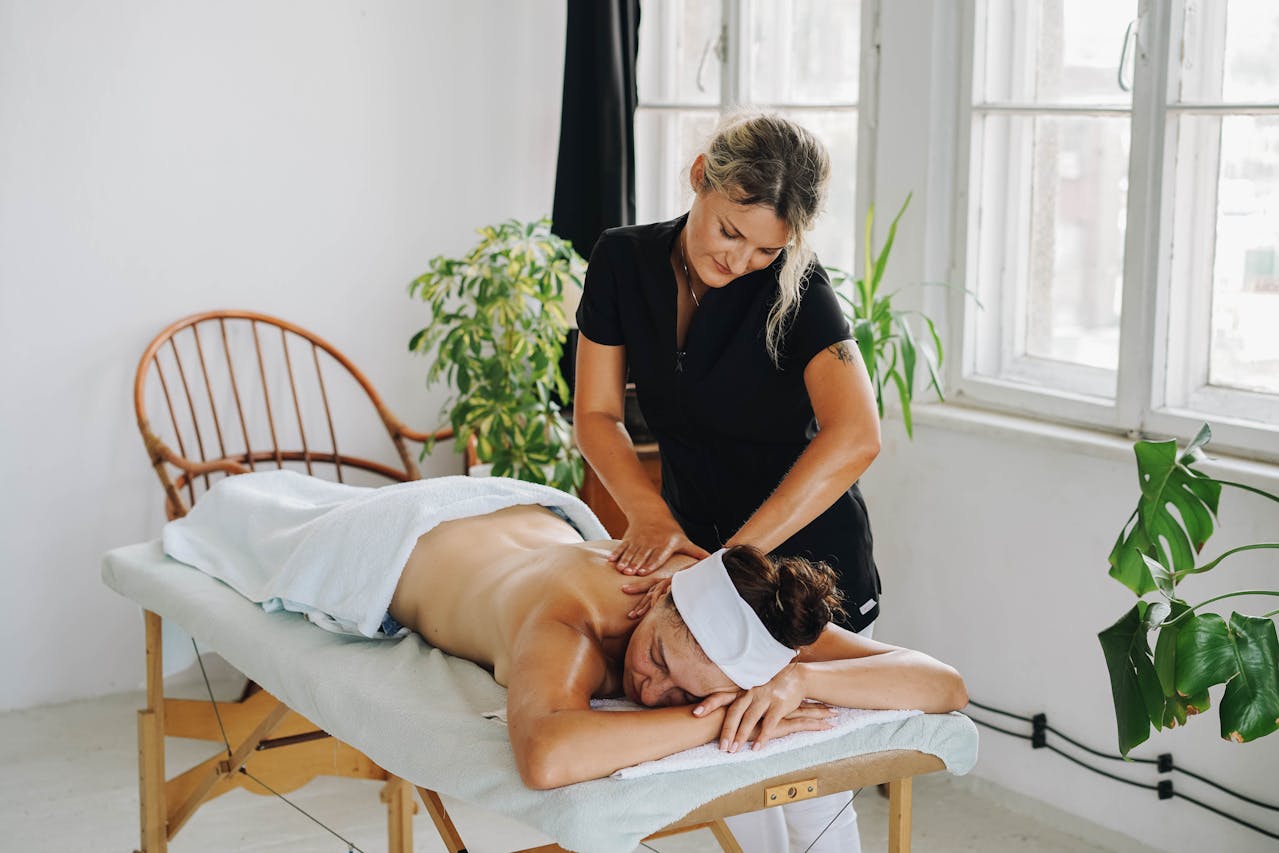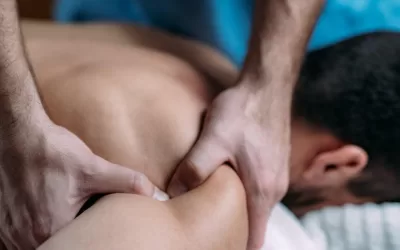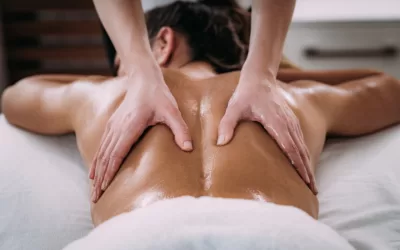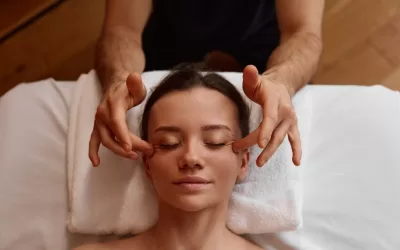Discover how Structural Integration, a bodywork technique, delves deep into the roots of chronic pain by addressing the body’s alignment and structure. Originating in the 20th century by Dr. Ida Rolf, this therapy focuses on manipulating fascia to enhance posture and alleviate discomfort. By realigning the body through targeted pressure and movement, Structural Integration aims to release tension and restore balance for long-lasting relief from persistent pain. Explore the intricate mechanics behind this holistic approach that seeks to address not just symptoms but underlying causes of chronic discomfort.
Structural Integration Explained
Structural Integration Sessions
Structural Integration is a specialized form of bodywork that focuses on manipulating fascia, the connective tissue surrounding muscles, bones, and organs. During Structural Integration sessions, practitioners use deep pressure and manipulation techniques to release tension in the fascia, aiming to improve posture, flexibility, and overall well-being.
The process of Structural Integration sessions typically involves a series of ten sessions, each focusing on different areas of the body. Practitioners work systematically through the body’s segments, addressing imbalances and restrictions in the fascia. By applying pressure and gentle manipulation, they aim to realign the body’s structure and enhance its function.
Purpose Of Structural Integration
One of the primary goals of Structural Integration is to achieve optimal physical alignment. Through targeted manipulation of the fascia, practitioners aim to address postural issues, chronic pain, and movement restrictions. By releasing tension and restoring balance in the fascia, Structural Integration can help individuals move more efficiently and with less discomfort.
In addition to physical alignment, Structural Integration also focuses on promoting overall well–being. By improving structural balance and reducing strain on the body’s tissues, this therapy can enhance energy levels, promote relaxation, and support emotional well-being. Many individuals who undergo Structural Integration sessions report feeling lighter, more grounded, and better connected to their bodies.
The History Behind Structural Integration
Origins
Structural Integration, a bodywork technique targeting chronic pain, traces its roots to Dr. Ida P. Rolf in the mid-20th century. Dr. Rolf, a biochemist, developed this therapy as a holistic approach to address physical discomfort and improve overall well-being.
Her method focused on manipulating the fascia, a connective tissue surrounding muscles and organs, to enhance posture and movement patterns. Through manual manipulation, Structural Integration aims to realign the body’s structure for optimal functioning.
Philosophy
Dr. Rolf believed that by restructuring the fascia through deep tissue manipulation, individuals could experience relief from chronic pain and achieve better alignment. Her philosophy centered around the idea that balance within the body’s structure is crucial for reducing strain and discomfort.
By addressing imbalances in the fascia, Structural Integration seeks to alleviate tension and promote greater ease of movement. This approach emphasizes the interconnectedness of the body’s systems and how adjustments in one area can have far-reaching effects on overall health.
Establishment Of Rolf Institute
In 1971, recognizing the growing interest in her innovative approach to healing, Dr. Rolf founded the Rolf Institute of Structural Integration. This institute serves as a hub for training practitioners in the art of Structural Integration, ensuring that her methods are passed down and practiced effectively.
The establishment of this institute marked a pivotal moment in the history of Structural Integration, solidifying its place as a respected form of alternative therapy focused on addressing chronic pain and enhancing physical well-being.
Understanding The Role Of A Rolfer
Applying Pressure And Movement
A roller plays a crucial role in addressing chronic pain by applying specific pressure and movement to the body’s fascia. This technique aims to release tension, improve posture, and enhance overall well-being. By targeting the fascia, which is a connective tissue surrounding muscles and organs, Rolfers can address underlying issues causing discomfort.
The Ten-Session Series
The ten–session series in Structural Integration is a fundamental aspect of the therapy. Each session focuses on different areas of the body, gradually working towards restructuring and realigning the body. This structured approach allows for comprehensive treatment of the entire body, addressing imbalances and promoting long-lasting relief from chronic pain.
Importance Of Fascia Lengthening
Fascia lengthening is a key objective in Structural Integration as it helps in improving flexibility, enhancing mobility, and restoring balance. By elongating the fascia through targeted manipulation techniques, Rolfers can alleviate restrictions and tightness within the body. Repositioning the fascia aids in correcting postural misalignments that contribute to chronic pain.
Repositioning For Balance
Repositioning the fascia is essential for restoring balance within the body’s structure. Through precise movements and adjustments, Rolfers works to realign the fascia to its optimal position. This process not only addresses existing pain but also prevents future discomfort by promoting better alignment and symmetry throughout the body.
Benefits Of Balanced Fascia:
- Improved posture
- Enhanced range of motion
- Reduced muscle tension
How Structural Integration Works
Fascia Manipulation
Structural Integration targets chronic pain by focusing on manipulating the fascia, a connective tissue surrounding muscles and organs. Through deep pressure and manipulation, Rolfers aims to release tension and restore balance.
The fascia can become tight and restricted due to factors like poor posture, injuries, or repetitive movements. By applying precise pressure and gentle manipulation techniques, Structural Integration aims to release adhesions in the fascia, allowing for improved flexibility and reduced pain.
Structural Alignment
Improving structural alignment is a key aspect of how Structural Integration addresses chronic pain. By working on the body’s alignment, Rolfers helps clients achieve better posture and movement patterns. This can alleviate strain on muscles and joints, reducing discomfort over time.
Rolfers use a series of sessions to gradually realign the body’s structure, addressing imbalances that may contribute to chronic pain. By focusing on whole-body integration, Structural Integration aims to create lasting changes that support overall well-being.
Posture Correction And Athletic Performance
Structural Integration plays a significant role in correcting posture issues that may lead to chronic pain. Poor posture can strain muscles and joints, contributing to discomfort and limited mobility. Through targeted interventions, Rolfers helps clients improve their posture for long-term relief.
Athletes often turn to Structural Integration to enhance their performance by optimizing their body’s alignment and movement efficiency. By addressing restrictions in the fascia and promoting better body awareness, Rolfers can help athletes move more effectively and reduce the risk of injuries.
Targeting Chronic Pain With Structural Integration
Pain Relief Techniques
Soft Tissue Mobilization: Structural Integration primarily focuses on soft tissue mobilization, targeting areas of tension and stiffness to improve mobility and reduce pain. By manipulating the soft tissues, such as muscles and fascia, Structural Integration aims to release chronic patterns of tension that contribute to discomfort.
Structural Integration: Through structural integration, Rolfers works on aligning the body’s structure to enhance balance and alleviate strain on specific areas causing pain. This approach helps in correcting postural imbalances that may be linked to chronic pain conditions.
Benefits Of Structural Integration For Chronic Pain Management
- Improved Body Awareness: One key benefit of Structural Integration is the enhanced body awareness it fosters. Clients often report feeling more connected to their bodies, which can aid in identifying and addressing sources of chronic pain.
- Enhanced Mobility: By targeting soft tissues and improving structural alignment, Structural Integration can lead to increased flexibility and range of motion. This enhanced mobility can help in reducing discomfort associated with chronic pain conditions.
- Long-Term Pain Relief: While providing immediate relief, Structural Integration also aims at long-term pain management by addressing underlying issues contributing to chronic pain. This holistic approach sets it apart from conventional treatments.
Specific Focus Areas: Sore Hips And Spinal Fusion
Sore Hips: For individuals experiencing sore hips due to various reasons like overuse or poor posture, Rolfers employs techniques to release tension in the hip flexors, glutes, and surrounding muscles. This targeted approach can alleviate hip discomfort and improve overall hip function.
Spinal Fusion: In cases where individuals have undergone spinal fusion surgery, Structural Integration can offer relief by working on the soft tissues around the fused area. By releasing tension in these tissues, Rolfers aims to reduce pain levels and enhance the individual’s quality of life post-surgery.
The Benefits Beyond Pain Relief
Improved Posture
Structural Integration not only targets chronic pain but also focuses on enhancing posture. Through the manipulation of connective tissues, Structural Integration helps align the body properly, leading to improved posture over time. This can alleviate strain on muscles and joints, reducing the risk of injuries.
Increased Flexibility
One of the key benefits of Structural Integration is the improvement in flexibility it offers. By releasing tension and realigning the body’s structure, Structural Integration enables individuals to move more freely and with greater ease. This increased flexibility can enhance athletic performance and overall mobility.
Enhanced Body Awareness
Structural Integration promotes a deeper connection between individuals and their bodies. By addressing imbalances and restrictions in the fascia, Structural Integration enhances body awareness. This heightened sense of self can lead to better movement patterns, improved coordination, and a greater understanding of one’s physical capabilities.
Stress Relief And Emotional Well-being
Beyond physical benefits, Structural Integration also contributes to emotional well-being by reducing stress levels. The hands-on manipulation involved in Structural Integration can help release emotional tension stored in the body, promoting relaxation and a sense of calm. This holistic approach not only addresses physical discomfort but also nurtures mental wellness.
Real-Life Applications Of Structural Integration
Athletic Performance
Structural Integration can significantly enhance athletic performance by improving natural footfall and overall body alignment. Athletes often benefit from increased flexibility, reduced muscle tension, and improved range of motion through Structural Integration sessions. This therapy helps athletes achieve optimal physical condition for peak performance.
Well-Being Enhancement
Individuals seeking to improve their overall well-being can turn to Structural Integration for holistic benefits. By addressing postural imbalances and releasing chronic muscle tension, Structural Integration promotes better body awareness and alignment. This leads to enhanced energy flow, reduced stress levels, and improved emotional well-being.
Real-Life Success Stories
- A professional runner struggling with persistent knee pain found relief through Structural Integration sessions that focused on correcting her gait and improving natural footfall. After several sessions, she experienced decreased pain and improved running efficiency.
- An office worker suffering from chronic back pain underwent a series of Structural Integration treatments that targeted postural misalignments caused by prolonged sitting. As a result, he noticed reduced discomfort, increased mobility, and better posture in his daily life.
Preparing For Your First Structural Integration Session
Open Communication
Before your initial assessment and session, it’s crucial to establish open communication with your Rolfer. Discuss any chronic pain issues, concerns, or goals you have.
Maintaining a dialogue throughout the session series helps the Rolfer tailor their techniques to address your specific needs effectively.
Mental And Physical Readiness
To make the most of your Structural Integration experience, ensure you are mentally and physically prepared. Engage in activities such as exercise classes, yoga, or group exercise classes to enhance body awareness.
Being mentally present and physically relaxed on the massage table allows the Rolfer to work deeply on releasing tension and improving alignment.
Setting The Right Environment
Prepare for your session by wearing comfortable clothing that allows free movement. Arrive a few minutes early to settle in and transition from your daily routine to a focused state for the session.
Creating a calm and open mindset before the session can enhance the effectiveness of the techniques applied by the Rolfer.
Establishing Correct Positions
During the session, your Rolfer may guide you into different positions to assess your body’s alignment. Trust their expertise in guiding you through these movements to help identify areas of tension or misalignment.
Conclusion
You’ve delved into the world of Structural Integration, uncovering its mechanics, history, and benefits. Understanding how Structural Integration targets chronic pain can pave the way for a transformative journey toward holistic well-being. By exploring the hands-on approach of Rolfers and the structural integration techniques they employ, you’ve gained insight into how this therapy addresses not just physical discomfort but also emotional and mental imbalances. The real-life applications shared have showcased the profound impact Structural Integration can have on individuals seeking lasting relief and enhanced vitality. As you prepare for your first session, remember that embarking on this path may lead to more than just pain alleviation – it could be a gateway to a harmonious alignment of your body, mind, and spirit.
Alleviate Chronic Pain With Structural Integration: Discover MedicinEvolution’s Innovative Approach For Long-Term Relief!
Are you or someone you care about battling chronic pain? MedicinEvolution is pioneering the use of Structural Integration for profound structural integration and pain management, providing a novel path to enduring relief and improved physical alignment. By harnessing the transformative power of Structural Integration, MedicinEvolution targets the deep-seated causes of chronic pain, initiating a holistic recovery process. Experience the freedom from ongoing discomforts such as jaw pain, difficulty in chewing, and uneven facial muscle tension—MedicinEvolution customizes its Structural Integration techniques to meet your specific needs, guiding you toward significant pain reduction and enhanced functionality. Their tailored Structural Integration sessions help you overcome the limitations imposed by chronic pain, unlocking your body’s full potential for movement and comfort.
If chronic pain has been limiting your mobility, or affecting your daily life, or if you’re seeking a sustainable approach to manage your symptoms, MedicinEvolution’s cutting-edge strategy that combines Structural Integration with specialized pain management techniques is your solution. Don’t allow chronic pain to set the limits of your physical health—act now and schedule your consultation with MedicinEvolution today! Begin your journey to recovery with their Structural Integration-focused treatments and progress towards a life of harmony, free from pain, and with a body that functions smoothly and comfortably. Witness the incredible transformation as your body escapes the grip of chronic pain!





